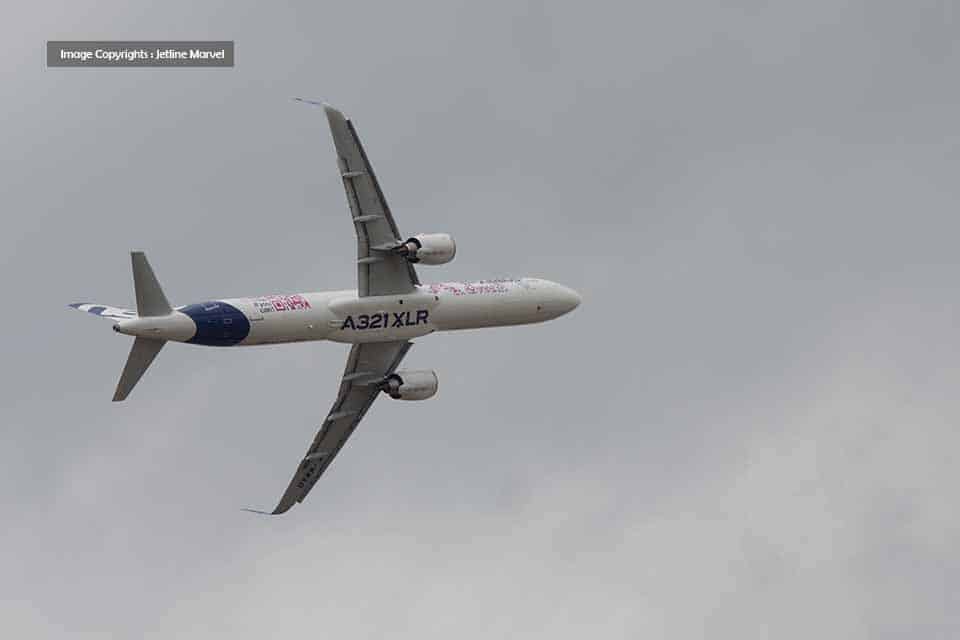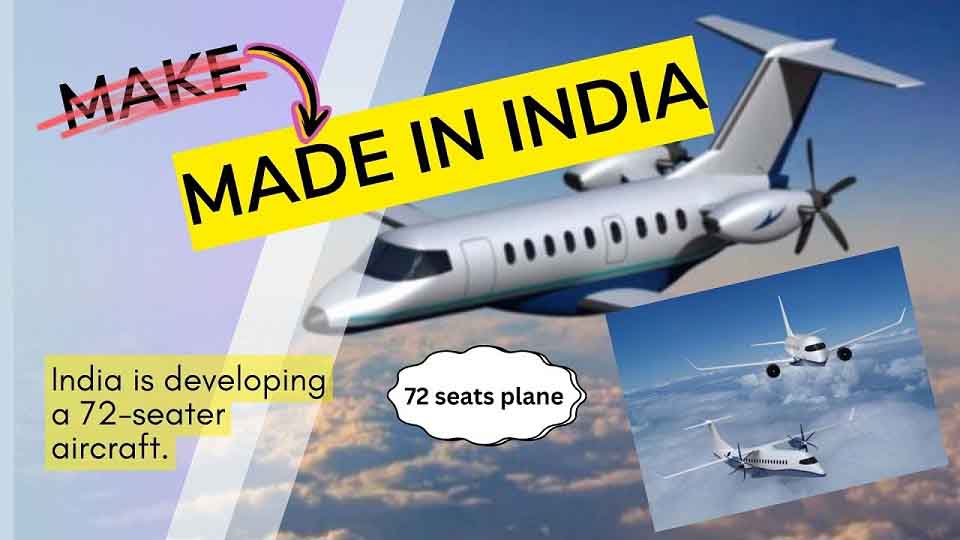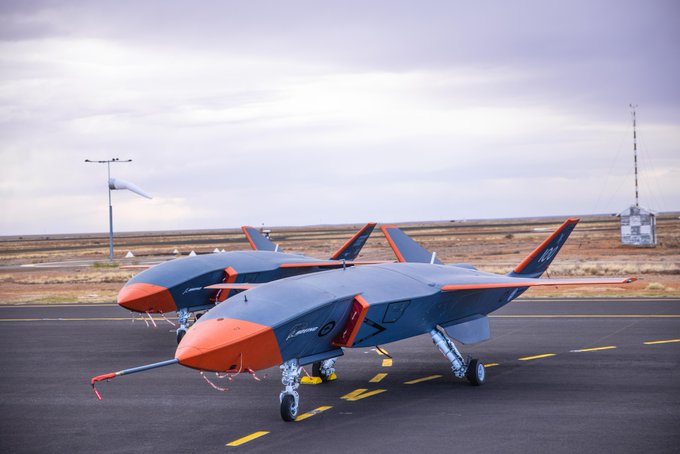Aerospace
5 latest innovative equipments by Airbus.

1. “Lining up” for innovation: A new non-destructive testing tool takes off with the Airbus A350 XWB
An easy-to-use testing tool for inspecting the composite airframe of Airbus’ popular A350 XWB jetliner has become a commercial success itself, with key airline customers ordering the device to support their daily operations.
Named the Line Tool, this ultrasound system is used to inspect an A350 in the event of impact shocks. These can occur at airports if, for example, catering trucks, baggage loaders or other vehicles make hard contact with an aircraft.
Easily portable in a small-sized suitcase, the Line Tool offers a simple and cost-effective solution for on-site inspections, and can be utilised by airline personnel who are not experts in composite materials. In addition, Line Tool employs the non-destructive testing (NDT) principle that allows damage assessments to be made without affecting the fuselage or wing area that is examined.
“The Line Tool delivers an automatic diagnosis, which means that airlines can carry out their own tests straight away,” explained Patrick Métayer, the head of non-destructive testing at Airbus.
2.Airbus’ innovative cable tie solution transitions from the shop floor to the world
A patented, paper-based Airbus solution that improves the process for installing cables and wires throughout an aircraft is now going global, underscoring the company’s continuing role as an innovation leader.
The idea began with Marc Bennion, a long-time Airbus employee working at the aircraft manufacturer’s Broughton, UK facility – which is responsible for assembling wings for all Airbus commercial jetliners, including the new-generation A350 XWB.
Bennion was fitting wiring to a wing when he realised that using pliers to snip off the plastic ties – which keep the cables organised – sometimes caused accidental damage. As even very minor damage results in the replacement of an entire cable, this was increasing costs and time spent, as well as causing frustration for Bennion and his colleagues.
As an alternative, Bennion proposed the idea of paper ties that could be torn off by hand instead. After experiments with several designs, a prototype was approved and subsequently patented by Airbus UK. “Marc’s name appears on the patent alongside Airbus,” said project leader Maud Didnee. “It proves that every idea matters and that innovation can be about simple ways of making a routine job easier.”
3.Virtual solutions provide real benefits for Airbus’ Beluga XL development.

As Airbus continues development of its next-generation oversize cargo transporter – the Beluga XL – the company has devised innovative solutions that are advancing this particular programme and will be used to benefit others in the future.
Among the innovation solutions is a new method for systems installation design that leverages 3D technology and virtual reality. As the existing A330 Family digital mock-up (DMU) only included the aircraft’s structural definition in some sections and not its systems, François Rouyre – who is Airbus’ head of DMU and structure, systems and cabin integration – had an interesting idea. “We decided to scan the physical aircraft with its system installation to check the DMU and give us complete visibility on its systems.”
Rouyre used a 3D laser scanner to produce a highly-detailed, 360-degree image. As this large file would be difficult to manipulate in computer-aided design software, he added it into the DMU in virtual reality – inside a full-scale virtual reality room so designers could then work on it directly.
“You can design about 20 metres of electrical bundles in an hour with virtual reality, whereas for CAD software, one metre takes four hours,” Rouyre added. “This method could be used by other programmes to quickly change a definition, answer a concession or a design query note.”
4. Airbus innovation effectively streamlines the repair process for fibre optic cables
A transnational, transfunctional Airbus team has been honoured for developing a highly-efficient new method to repair fibre optic cables, which are used extensively across the company’s product line of modern commercial jetliners.
Lighter than traditional metallic wiring and offering much higher bandwidths, fibre optic cables are applied throughout an aircraft – integrated in taxi aid cameras, head-up displays, in-flight entertainment, cockpit systems and other key components. However, if non-conformities were discovered in a cable during its installation, making the necessary repairs was a costly and time-consuming process.
Project co-leader Laetitia Mennebeuf, a fibre optics specialist from Airbus’ Systems Engineering department, explained the issue at hand: “Before, if damage was found, the entire cable and surrounding harnesses needed to be removed so that the repair could be performed in a shop outside of the aircraft. This took 10 hours to do and in removing the harness, other cables and wiring could get damaged.”
She added: “One of the more common non-conformities concerns the contacts at the two ends of a cable. If the contacts were deficient, they had to be cleaned and polished or remanufactured at the shop floor laboratory.”
“Working with our supplier, AVOptic, we developed new, portable tools that re-polish the contacts,” explained fellow project co-leader Nadège Brunaud-Martinerie, an engineer from Airbus’ Manufacturing Engineering department. The process was introduced at Airbus facilities through special “awareness sessions.”
“Because they’re portable – and battery-powered – the new tools can be brought on board the aircraft and repairs made without disturbing the other installers,” she continued. “We use the same processes and get the same results and quality as before, but by not having to remove entire cables and harnesses, repair time is cut from 10 hours to two hours.”
5.“Smart glasses” show the future of Airbus’ innovative aircraft cabins
Airbus is providing immersive experiences with the company’s passenger cabins of tomorrow – leveraging “smart glasses” that integrate state-of-the-art 3D data technology for virtual, interactive tours of future aircraft interiors and their advanced functionalities.
“Visits” with smart glasses – developed by Airbus virtual reality experts together with the company’s cabin marketing team – already are proving to be a major success with customers during trips to Airbus facilities, as well as with trade show attendees.
At the heart of the smart glasses is a high-resolution smartphone, which features a special Airbus app. The smartphone is clipped to a headset and once the app is launched, the virtual reality experience can begin. By focusing on a specific point, the user decides where to go – choosing from different aircraft, first or business class, galley concepts and more.
Inside the virtual cabin, visitors can pull out galley units, take a closer look at the lavatory or zoom in on details. Additional apps offer the possibility to compare seat colours, mood lighting designs and other options. Move your head up, down, or to the side and your view moves along the virtual cabin wall accordingly.
While the customer is exploring the cabin, an Airbus representative can follow his or her path on a tablet. “This way, we can answer questions directly and point out differences between module versions, for example,” said Airbus’ Dieter Kasch, who last year – along with his virtual reality team – brought the smart glasses to maturity during a period of only three months.
Source : Airbus press
Liked it ..?
Share with your friends and family

Aerospace
India is currently in the process of developing its own 72-seater aircraft.

India stands on the cusp of pioneering its aircraft development, a potential reality in the near future. With the Indian aviation market poised to become one of the world’s top five largest markets, there’s a burgeoning demand for carriers like Indigo, Air India, and Akasa. Together, they’ve placed orders for over 1400 aircraft from Boeing and Airbus, marking one of the highest orders in the aviation industry.
‘Made in India’ passenger aircraft.
To transform the dream of a ‘Made in India’ passenger aircraft into reality and propel the local aerospace ecosystem, India requires a comprehensive National Aerospace Policy. Notably, Airbus and Boeing have yet to establish final aircraft assembly lines (FALs) within India, spurred by the significant orders received.
India has exerted considerable pressure to establish assembly lines domestically, mirroring the success of similar initiatives abroad. With its aviation market growing at an unprecedented rate, India boasts the largest order book for new aircraft, estimated at a staggering $70 billion over the next decade. Existing airports bustle with travelers while new ones are either under construction or in the planning phase.
The timeline for India to realize the Prime Minister’s vision of a Made in India commercial aircraft hinges on various factors. Leveraging its prowess in exporting IT services and aerospace technologies, India is poised for the next stage of development.
The success rate of China’s C919 and ARJ21.
In the realm of commercial aerospace manufacturing, Europe and the US have long held the reins, but China has emerged as a formidable contender in recent years. China’s journey began in 2002 with the ARJ21, a regional jet, and later the C919, a larger narrow-body aircraft. While the ARJ21 encountered delays and is seen as a modest achievement, the C919 boasts over one thousand orders, marking a significant success.
Both programs heavily rely on foreign technologies sourced from global original equipment manufacturers (OEMs), underscoring the importance of collaborations and creating an appealing environment for foreign companies to operate within China.
Indian HAL has 80 years of history.
India, too, boasts a rapidly growing aerospace sector that traces its roots back to pre-independence times, predating China’s endeavors by over 60 years. Hindustan Aeronautics Ltd (HAL), initially established as Hindustan Aircraft Ltd in 1940, spearheaded this journey. Given its early establishment, India was poised to become a major player in aerospace manufacturing.
HAL shoulders much of the responsibility for developing aircraft for defense purposes, including the TEJAS, attack and multirole helicopters, trainer aircraft, and notably, the Dornier D228, a passenger version aircraft representing a significant breakthrough for the Indian Aerospace Industry. Demand for helicopters is also on the rise, further showcasing India’s potential in the aerospace domain.
India’s aviation market Demand.
One drawback in the defense sector is the inherent uncertainty surrounding government budgets and delays in allocating funds for helicopter purchases. On the civilian front, aircraft demand remains consistently high, especially when they meet passenger needs and receive regular approvals from authorities.
India’s aviation market is distinct, calling for unique aircraft programs. With a high density of flyers, there’s a prevalent preference for short-haul flights from rural areas to major cities. As the air travel network expands to Tier-2 and Tier-3 cities, the number of operational airports is expected to surge from the current 140 to 230-240.
The demand for smaller aircraft, particularly for serving Tier 1-3 cities, is paramount for airlines. While the Dornier aircraft has been utilized for some routes, its availability limitations and noise levels have raised concerns. Jet planes emerge as preferable options for Indian travelers due to their efficiency and comfort, aligning better with the needs of airlines.
Establishing a sustainable aircraft program requires long-term commitment and substantial risk capital, often necessitating government support akin to what’s observed in developed markets. For instance, COMAC, over its lifetime, received significant state-related support ranging from $49-72 billion, while Airbus, over the years, obtained $22 billion from the EU.
Encouraging private investment is crucial for fostering growth in the aerospace sector and nurturing indigenous aircraft development in India. Such initiatives could significantly bolster the country’s aviation industry and enhance its self-reliance in this critical domain.
Indian Regional Jet (IRJ).
Introducing the Indian Regional Jet (IRJ), a cutting-edge project led by India’s National Aerospace Laboratories (NAL) and set to be manufactured by Hindustan Aeronautics Limited (HAL). This regional airliner aims to redefine air travel with its design, offering a capacity of 80–100 passengers. The base model, known as the RTA-70, will boast 80–90 seats while distinguishing itself with a cost that’s 20 percent lower than its global counterparts.
Development is well underway, with plans for a 90-seater variant expected to take flight by 2026. This next-generation aircraft promises impressive specs, including a range of 1,350 nm (2,500 km), and requiring a take-off and landing field length of 900m (2,950 ft). With dimensions of 28.6m in length and a wingspan of 29.4m, it reaches a service ceiling of 30,000 ft and cruises at 300kt, all while meeting Stage 4 noise criteria.
Saras Aircraft.
Meanwhile, NAL’s innovative spirit extends to the NAL Saras, another project in the works. Already, prototypes like the Mark1 and its successor, the second version dubbed ‘Mark 2,’ are pushing boundaries. The Saras Mark 2 showcases versatility, offering ranges of 600 km with 19 passengers, 1,200 km with 14 passengers, and an impressive 2,000 km with eight passengers. With a top cruise speed exceeding 600 km/h and an endurance of six hours, it’s a game-changer.
Weights
Max. take-off : 7600 kg (16755 lb)
Operating empty wt. : 5100 kg (11244 lb)
Max. fuel weight : 1832 kg (4039 lb)
Max. pay load : 1710 kg (3770 lb)
Power plant
SARAS is powered by two Pratt and Whitney Canada.
PT6A-67A turbo-prop engines (flat rated to 1200 shp)
driving 2.6 m diameter 5 bladed constant speed propellers
at 1700 rpm in a Tractor configuration.
Main dimensions
Span : 18 m (59.05 ft)
Length : 17.3 m (56.8 ft)
Height : 5.5 m (18 ft)
Performance (ISA)
Take-off distance : 820 m (2690 ft)
Landing distance : 665 m (2182 ft)
Max. rate of climb : 10 m/s (1980 ft/min)
Max. range* (19 pax) : 750 km (405 nm)
Max. range* (10 pax) : 2350 km (1270 nm)
Ferry range* : 2400 km (1295 nm)
Max. cruise speed : 485 km/hr (260 Kts)
Endurance : 6 hours . With 45 min reserve
Equipped with propeller engines initially, the Saras is poised for future upgrades to jet engines if project requirements align. NAL’s ambition shines through in its cost-effective approach, targeting ₹50 crore per unit for the Saras Mk2, undercutting the ₹55 crore Dornier 228 with its unpressurized cabin and altitude restrictions. Anticipating government support, NAL aims to secure orders for 50-60 units to ensure manufacturing viability, with an initial order of 15 aircraft from the Indian Air Force potentially expanding to 120–140 units in the coming years.
Aerospace
Top 10 world’s best military drones in 2024

In an age defined by rapid technological advancement and strategic military innovation, the role of unmanned aerial vehicles, commonly known as drones, has become increasingly pivotal on the modern battlefield.
As we step into 2024, the global landscape of military drones continues to evolve, with nations investing heavily in cutting-edge technologies to maintain superiority in reconnaissance, surveillance, and combat operations.
Join us as we delve into the top 10 military drones that are shaping the future of warfare, showcasing their capabilities and impact on the ever-changing theater of conflict.
1. Boeing MQ-28 Ghost Bat :This aircraft represents a cutting-edge advancement in unmanned combat aerial vehicles, currently under development by Boeing Australia. As a Loyal Wingman class aircraft, it is engineered to seamlessly integrate with existing military aircraft, enhancing and extending airborne missions through its stealth capabilities and multirole functionality. With an impressive range surpassing 2,000 nautical miles and a combat radius of 900 miles, it promises to revolutionize aerial operations. Anticipated to join the ranks of the RAAF in 2024-25, these unmanned platforms herald a new era in military aviation.
2.The Bayraktar TB2: stands as a formidable medium-altitude long-endurance (MALE) unmanned combat aerial vehicle, crafted by the Turkish company Baykar. Renowned for its prowess, Bayraktar drones have found their way into the arsenals of numerous nations worldwide, seeing action in various conflicts including the Russian invasion of Ukraine and the Tigray War. Featuring a sleek blended wing body design complemented by an inverted V-tail structure, the TB2 platform exemplifies innovation in aerial technology. With an approximate price tag of 5 million US dollars per unit, it represents a significant investment in defense capabilities.
3. Bayraktar Kızılelma: A cutting-edge project by Turkish defense company Baykar, introduces a single-engine, low-observable, carrier-capable, jet-powered unmanned combat aerial vehicle. It boasts a sleek, supersonic airframe designed for reduced radar cross-section (RCS) and is outfitted with an advanced AESA radar system. Its operational combat radius spans 500 nautical miles. Weighing in at a maximum takeoff weight (MTOW) of 6,000 kilograms (13,200 lb), it reserves 1,500 kg for payload capacity. Already, two prototypes have been manufactured, with plans for operational deployment expected by 2025.
4. XQ-58 Valkyrie: is a cutting-edge unmanned flying machine (drone) built for the U.S. Air Force. Designed by Kratos Defense, this high-tech aircraft is like a silent wingman, following a manned fighter jet and carrying out various missions. These missions could include scouting ahead for dangers, providing extra firepower, or even acting as a decoy to protect the manned aircraft. It boasts a maximum range extending approximately 3,000 miles, with a hefty maximum launch weight capped at 6,500 pounds. This figure includes the capacity to accommodate up to 600 pounds within its internal payload bay and an additional 600 pounds beneath its wings.
5.TAI Aksungur: is a heavyweight drone built for the Turkish Armed Forces. Designed by Turkish Aerospace Industries, it boasts an impressive wingspan of 12 meters (39 feet) and can carry a significantly larger payload than its predecessor. The Aksungur’s central fuselage, housed beneath the wings, is the brain of the operation. The range of this drone extends to 6,500 kilometers and payload capacity is 750 kg. It carries all the avionics, camera systems, and sensors the drone needs to function. An additional camera mounted on the chin provides a clear view directly below the aircraft.
6.Hongdu GJ-11: It is Sharp Sword is a marvel of Chinese aviation technology. This unmanned aerial vehicle (UAV), also known as a drone, is designed for stealth and long-range combat missions. The Sharp Sword’s tailless flying wing design makes it difficult to detect on radar. Internally, it houses two weapon bays, allowing it to carry a variety of armaments for air-to-surface strikes.
While the exact engine remains unknown, reported specifications boast an impressive range of 2,485 miles (4,000 kilometers) and accommodates internal weapons bays capable of carrying payloads of up to 2,000 kilograms (4,400 lbs). This combination of stealth, firepower, and range makes the GJ-11 a significant player in modern aerial warfare.
7.Dassault Neuron: is a pioneering unmanned combat aerial vehicle (UCAV) built through a collaborative effort by European nations. This high-tech drone serves as a technological demonstrator, paving the way for future autonomous combat aircraft.
Designed for stealth and independent operation, the nEUROn is built to handle the toughest combat environments. With a sleek design measuring 10 meters long and 12 meters wide, it has an estimated unit cost of €25 million if a production version were built. The nEUROn’s demonstrator model weighs approximately 5 tons and showcases the potential for future European-built combat drones. It has capability to transport two laser-guided 250 kg bombs, each housed in its own weapon bay.
8.The Sukhoi S-70 Okhotnik-B: also known as Hunter-B, is a formidable unmanned combat aerial vehicle (UCAV) under development by Russia’s Sukhoi company. Designed to strike fear into the hearts of enemies, this high-tech drone is built for stealthy operation.
The Okhotnik-B boasts a flying-wing design, a favorite technique for minimizing radar detection. Its construction incorporates composite materials and special stealth coatings to further reduce its radar signature.Powering this aerial predator is an AL-31 turbojet engine, allowing it to reach estimated speeds of 1,000 kilometers per hour with a range of 6,000 kilometers.
9.The Northrop Grumman X-47B: is a groundbreaking unmanned combat aerial vehicle (UCAV) designed for launching and landing on aircraft carriers. This American marvel, developed by Northrop Grumman, is a tailless jet with a unique blended-wing-body design. This design helps it cut through the air efficiently. It can operate semi-autonomously, meaning it can fly pre-programmed missions with some human oversight.The X-47B can refuel in the air, extending its range for even longer missions at sea. The X-47B drone boasts an approximate range of 2,100 nautical miles.
10.CAIG Wing Loong II:
The Chengdu GJ-2, also known as the Wing Loong II, is a powerful unmanned aerial vehicle (UAV) built for long-range strikes. Developed by the Chengdu Aircraft Industry Group, this drone can be controlled remotely or fly autonomously using pre-programmed missions.
An upgrade from its predecessor, the Wing Loong I, II boasts a larger body and wider wingspan, allowing it to carry an impressive payload. This drone can pack a punch with up to 480 kilograms of laser-guided bombs and missiles. The manufacturer even claims it has the potential to carry air-to-air weaponry, making it a versatile threat in the skies.It can carry a maximum payload of 400 kilograms.
Aerospace
India is set to build a central command for the Air Traffic Control system, called ISHAN

India’s air traffic growth has led to increased responsibilities for air traffic control. The Airports Authority of India (AAI) is considering centralizing air traffic control for aircraft, dividing the country into four regions. The goal is to consolidate India’s segmented airspace into a single entity to improve air traffic management (ATM) efficiency, safety, and smoothness.
Recently, the AAI invited expressions of interest to develop a detailed project report for the Indian Single Sky Harmonized Air Traffic Management (ISHAN) initiative in Nagpur. Under this plan, air traffic controllers in Nagpur would handle domestic flights flying above 25,000 feet, eliminating the need for coordination among controllers in different regions.
For domestic regional flights operating above 25,000 feet, control would shift to the central command in Nagpur. This consolidation aims to enhance airline operations, increase flight handling capacity, and reduce congestion and flight times for passengers.
Currently, the AAI provides ATM services over Indian airspace and adjoining oceanic areas, covering over 2.8 million square nautical miles. This airspace is divided into four flight information regions (FIRs) in Delhi, Mumbai, Kolkata, and Chennai, along with a sub-FIR in Guwahati.
FIRs are responsible for providing air traffic services, including weather information, visibility, and search and rescue assistance. The proposed unification under the ISHAN initiative aligns with the projected growth of the aviation industry, which anticipates a doubling of domestic passenger traffic by 2030.



























